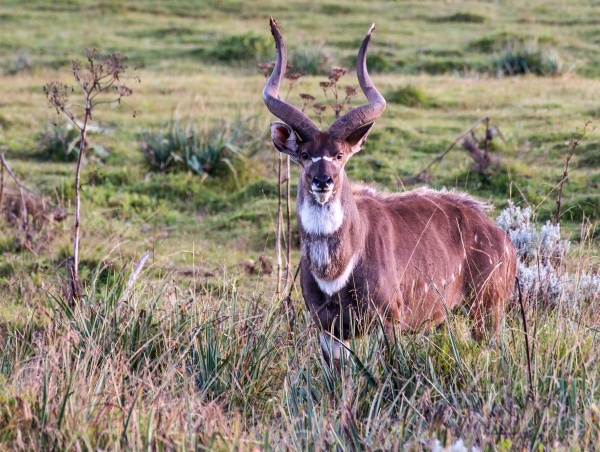Facts About Mountain nyala
The mountain nyala, also known as the balbok, is a distinctive antelope species inhabiting the high-altitude woodlands of central Ethiopia. First described by English naturalist Richard Lydekker in 1910, these animals exhibit marked sexual dimorphism. Males are typically larger, standing 120–135 cm tall and weighing between 180–300 kg, while females stand 90–100 cm tall and weigh 150–200 kg. Both sexes possess grey to brown coats with white markings, but only males have horns.
These antelopes are quite shy and tend to avoid human interaction, usually forming small groups of four to five individuals. Their diet primarily consists of leaves and shrubs, with occasional grazing on grass. Mountain nyalas begin mating at around two years of age, with a gestation period of eight to nine months, typically resulting in the birth of a single calf. They inhabit montane woodlands at elevations of 3,000–3,400 meters, exclusively in the Ethiopian highlands to the east of the Rift Valley.
The mountain nyala faces significant threats, including illegal hunting, habitat destruction, livestock encroachment, and predation. The species is classified as Endangered by the IUCN. Conservation efforts have been hindered by inadequate enforcement of legal protections. The population has seen a drastic decline, from an estimated 7,000–8,000 individuals in the 1960s to just 2,000–4,000 in the 1980s.
Despite these challenges, the mountain nyala holds a special place in Ethiopian culture. It is featured on the Ethiopian ten-cent coin and appears in various cultural contexts. While some communities, such as the Oromo people, hunt them, there are ongoing efforts to conserve and protect this endangered species.

 South Sudan
South Sudan